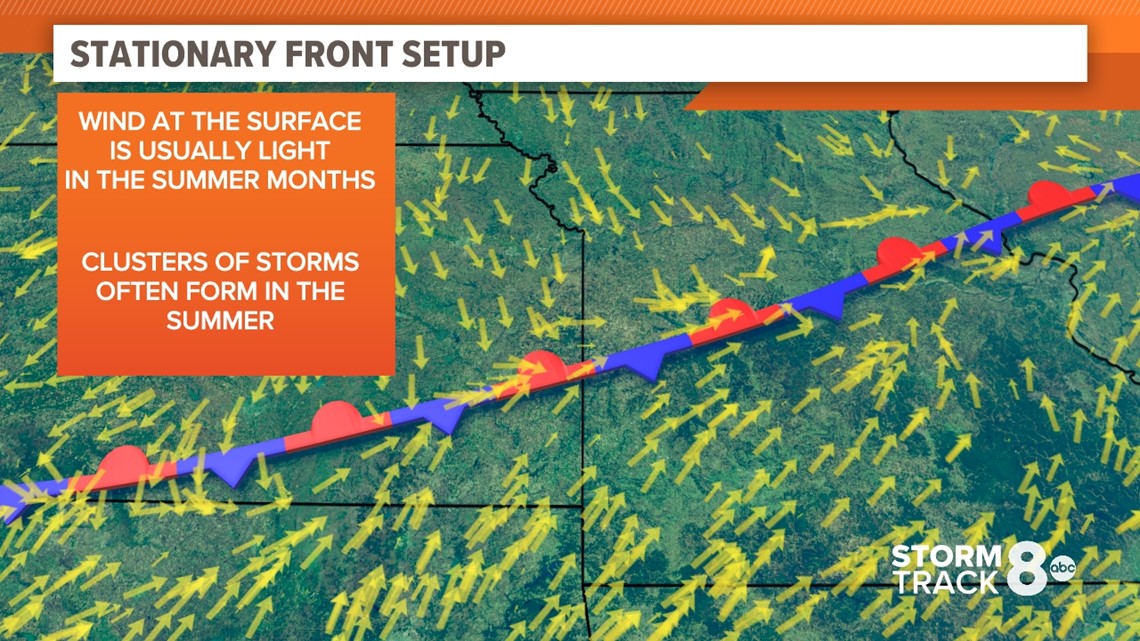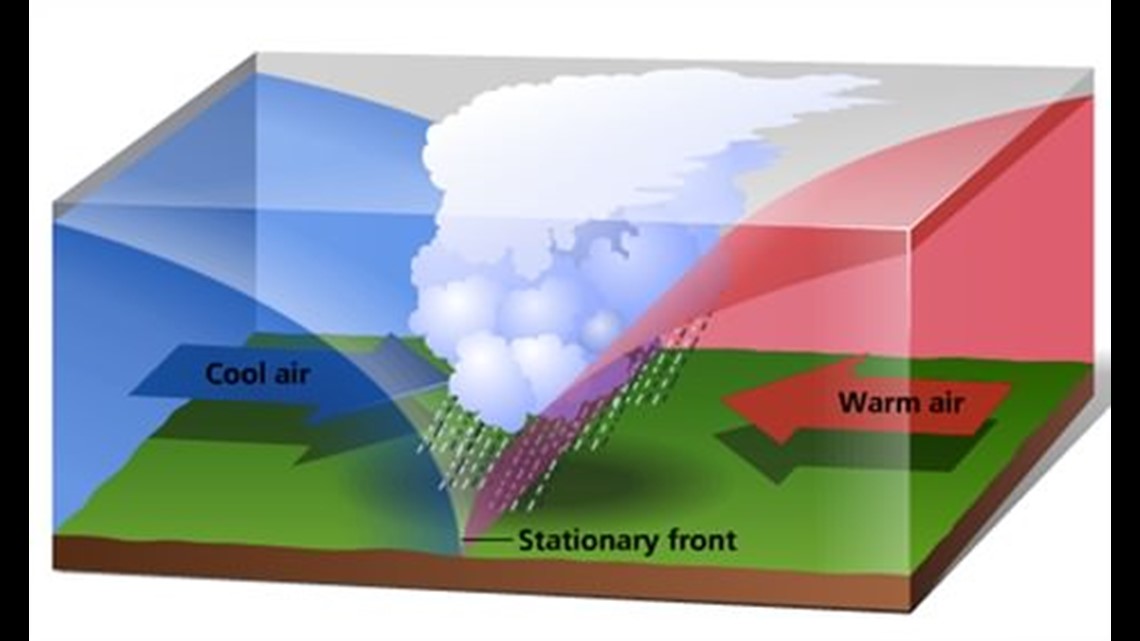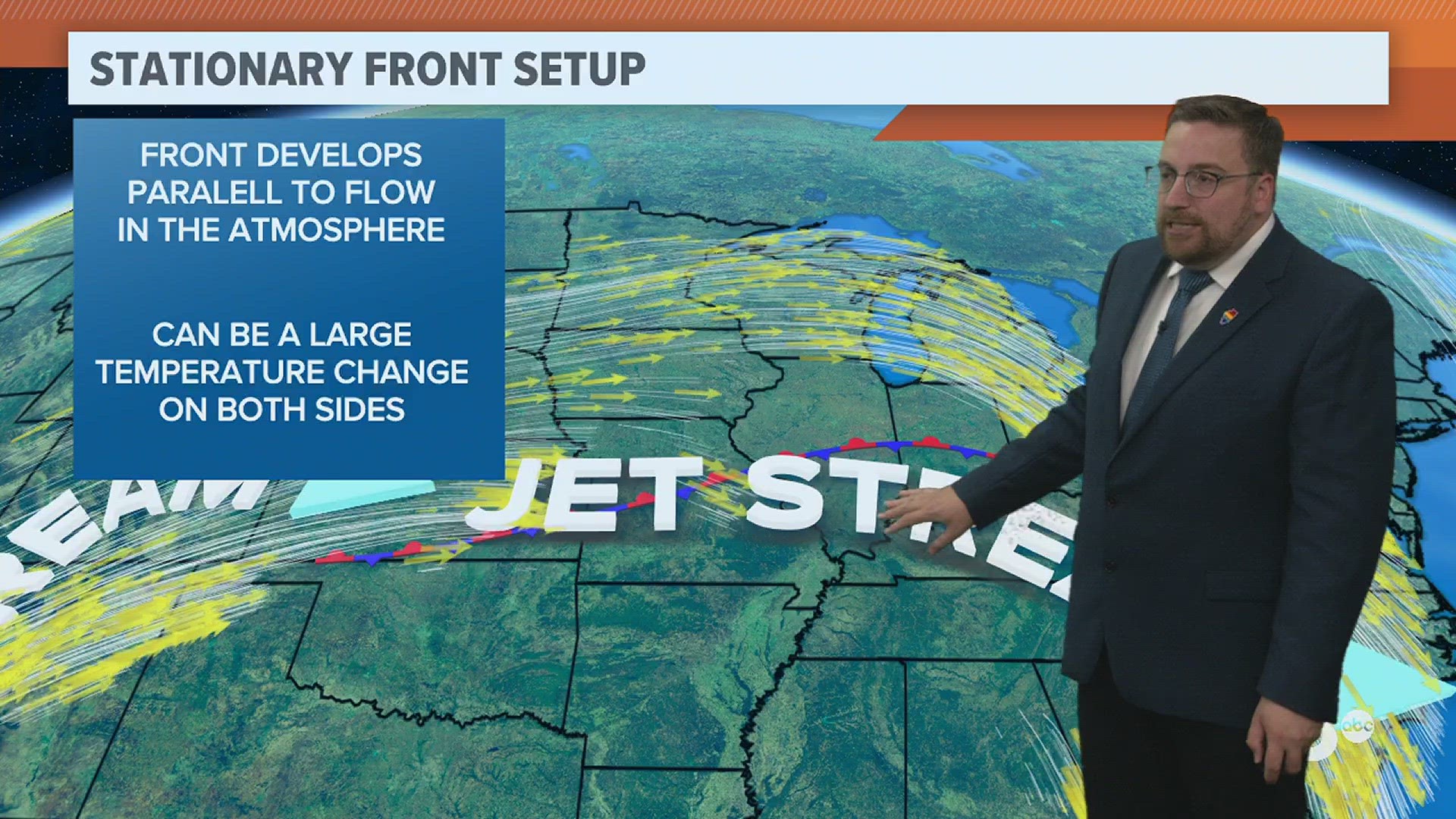MOLINE, Ill. — If you've checked out our Storm Track 8 University courses, you'll be very familiar with the types of fronts that move through our region at times. Most of us are very familiar with cold and warm fronts, but what about stationary fronts? Let's dig in!
A stationary front is just that, stationary
This type of front can typically be found in our region during the spring, summer, and fall months, especially when the stronger steering winds are nearby. This type of front aligns itself with those steering winds aloft, unlike a cold or warm front that aligns itself perpendicular to those same winds. Thus, there is nothing to steer or push it in any certain direction. It just lingers. This process is also heavily controlled by the temperature pattern, usually in which cold air is not moving.


Because these fronts offer very little in terms of movement, they often hang around in the same region for days on end, producing waves of showers and thunderstorms as pieces of energy travel along the front.


If you dissect what this front looks like in a 3D space, it's easy to see why this front becomes "stuck". You have equal forces on both sides of it trying to advance in opposite directions, essentially running into each other while also providing enough lift to create showers and thunderstorms. During the summer months, this type of front paired with a strong storm system often causes those very large and loud thunderstorm complexes that arrive late at night and early in the morning.
Identifying a stationary front on a map
Maps on our newscasts and online often show the location of fronts, including warm, cold, and stationary fronts. Cold fronts will be solid blue lines with blue triangles pointing toward the area they are moving to. Warm fronts will be solid red lines with red half-circles pointed toward the direction they are also moving. Stationary fronts, however, will have both a warm front and cold front alternating, meaning little to no movement is happening.
Have a question that you would like me to answer for an upcoming Ask Andrew segment? Submit it, here!
WRITE

